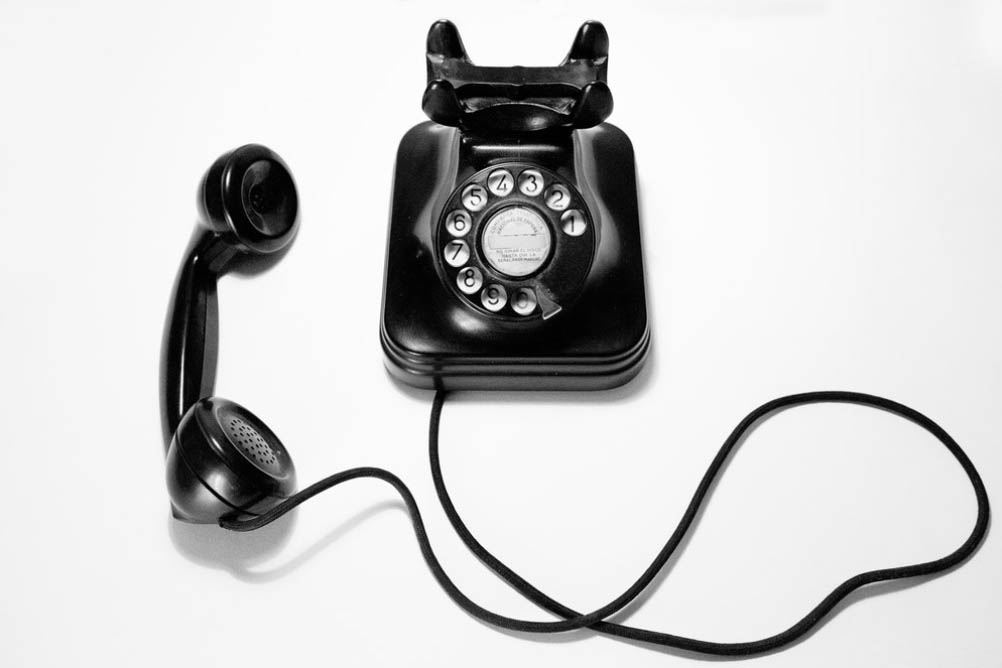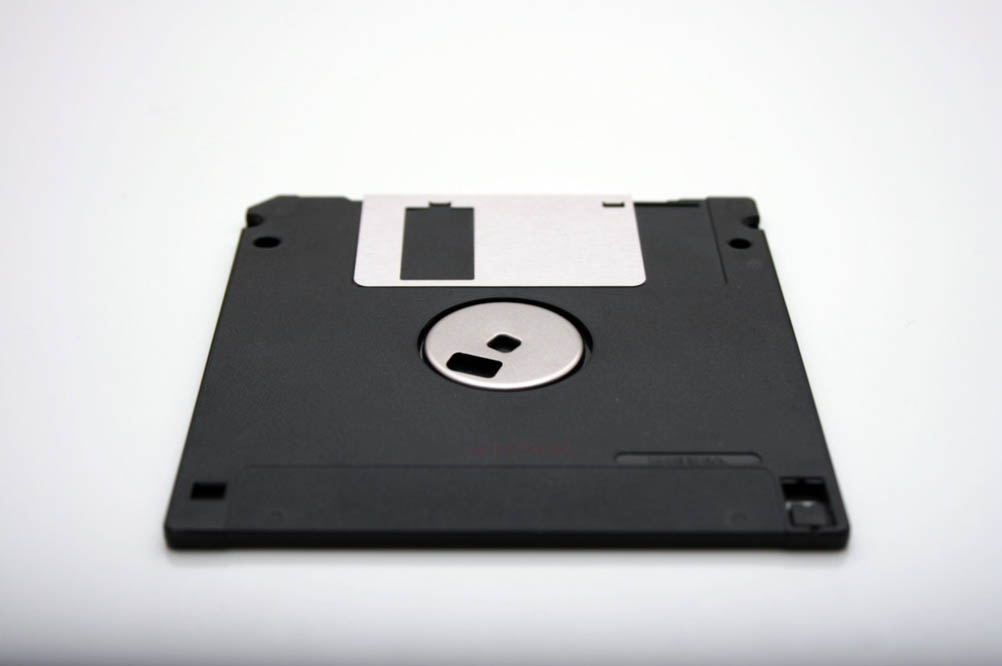The rise of technology is playing an important role in our lives these days. It seems that no one can function without computers, smartphones, or tablets. From today’s point of view, it is unimaginable how everyone managed to survive and any work was completed 20 years ago. To shed some light on this topic, here’s a list of six computer habits people had two decades ago.

Patience vs. dial-up connection
Not so long ago, an internet connection meant always having a wire spread over a few rooms (and floors), only to wait on a painfully slow dial-up internet connection, so you can check your email or see who’s online on MSN. And if someone in the household tripped over the wire, you had to say goodbye to the chat session with a friend. And how frustrating was it when you wanted to get online but one of your family members was using the phone?! Today, we can enjoy an ultra-fast connection via Wi-Fi and cellular data while sitting on your couch anytime we want. Thus, it’s hard to imagine how much patience people once had with the dial-up connection.
Impracticality of storage
Remember the floppy discs from 20 years ago? They were of course used to store homework, documents, images and games. And if you’ve already forgotten, a floppy disc storage capacity was only 1.44 megabytes. This is ridiculously low if we consider the rapid storage evolution in the last two decades. CDs, USBs, external memory storage, and, of course, the rise of cloud storing which is accessible remotely via mobile devices. It is stunning how much progress was made in such a short period of time. Today, TV show enthusiasts can copy and save a full season of “Game of Thrones” on a small USB stick and take it to their friend’s house.

Size matters
20 years ago, when someone bought a new computer, this usually meant inviting three more friends over. What for? Just to bring the thing home from the store! Some even had to make minor furniture re-arrangements to fit the beast in their homes. Yes, 20 years ago many computers were large and heavy, with multiple components and dangling wires. It’s hard to grasp it with today’s easily portable laptops, smartphones, and tablets. As new devices become available every day, even companies rarely use desktop computers. These days, they instead equip their employees with laptops and mobile devices.
Communication made easy
Remember fax machines and how annoying using them was? How about sending first emails or using chat-rooms? Communication today has become much easier. Today we have instant messaging and face-to-face conversation channels, like Skype, FaceTime, Google Hangouts, etc. Beating down geographical barriers today is beneficial not only for families living on different sides of the world, but companies whose customer support can utilise face-to-face chats with a customer can also benefit from this technological advance. When it comes to communication evolution, social media keeps on growing and adapting to users’ communication style, thus reshaping how humanity interacts.
The rise of apps
People were once able to log into their email or search for something on the web solely through browsers, and before the invention of the search engines, WWW was the only option. As the internet became widely available and people started using it on mobile devices, businesses opted for creating web and mobile phone applications for faster access and timely notifications. With millions of applications available today, people can reorganise and improve their lives at home or on the go via their mobile devices.
Increasing need for cybersecurity
In the early 2000s, the only thing most people knew about cybersecurity was the fact that they needed an antivirus program on their computer. Today, the awareness of security measures is rapidly growing as we need to use the internet for many areas of our life. While technology advances, hackers are also finding more and more ways to intrude our privacy and make use of it. Thus, people actively look for secure ways to browse the internet and remain incognito on the web today. For example, such services as virtual private networks (or VPNs) are becoming more and more popular these days. They help people hide their identity online and keep their data safe by encrypting it. As an increasing part of browsing happens through mobile, users tend to turn to VPNs for the security of their data transmitted through their smartphones, too. Right now, one of the most popular VPN applications for Android is NordVPN. Nevertheless, iOS has plenty of VPN applications available, too. This kind of cybersecurity measures would have seemed overwhelming ten of fifteen years ago.
Conclusion
For those who are still not convinced of the massive shift in people’s computer habits that occurred over the past 20 years, here’s a small experiment. Whenever you need to talk to someone, try faxing them or sending them an email. If you need to find a recipe (or any other information for that matter), head to your local library. And if you need to save and store paperwork, try doing so on a CD. Try practicing this type of behaviour for a day, and you’ll see that the impracticality of completing these little tasks may drive you insane. However, it will clearly demonstrate how much our comping habits have changed in the last two decades. I often want to go back 20 or 30 years in a time machine and experience some of the awesomeness of years gone by, but to be honest there would probably be so many things I would find frustrating and slow. Rose tinted glasses and all that.


Owen
Nov 23, 2018 -
Hahaha, this is an awesome article! You don’t really think about it that way, but when it’s written down like this it makes you think. Thanks for a sentimental journey back in time :D For what it’s worth I agree with you regarding a VPN, I also use NordVPN and I can confirm that it’s one of the best ones I’ve tried. Thanks again!
Duncan
Dec 2, 2018 -
Having started work as an Electronics Engineer forty years ago I can assure you that people and business got on fine before the widespread use of the internet. What has happened in the last twenty years is that it has decimated or eliminated the alternatives. The film you posted on the Video shop show just one aspect of how that has happened. We had a Blockbuster store in town which is now a Costa Coffee.
Last week we received a tiny copy of the Yellow pages, labelled “Final Edition”. Twenty years ago the yellow pages for any large town was about 4 cm thick. Need your computer repairing ? There would have been several pages listing the local companies that could do this.
Computer Shopper magazine, in its heyday, wasn’t much thinner, mainly because each issue had bound in 30+ page catalogues from the likes of Evesham Micros and Watford Electronics listing everything you might want at time from the latest laptops to components like ZIP drives.
If you wanted something second hand then Micro Mart had hundreds of pages of used computers and parts. I sold three computers using it.
At work component manufacturers freely gave out data books listing all their products. The status of an engineer was indicated by how may data books he had stacked up at the back of his desk. I think a major part of the growth in storage requirements is due to imaging. I have used several word processors which would happily run from a 720K Floppy Drive. Going back thirty years ago the Polaroid Camera was one of the most used pieces of equipment we had at work, especially as the works stores kept the film in stock..
The reduction in paper media makes me wonder how long the Argos catalogue will continue in that form.
I was actually on the internet twenty years ago using a 486 with a 14.4K dial up modem. I have fond memories of that time as pages were designed with that in mind and their were no annoying pop up adverts, banner adverts, or fake news.
Of course it would be very difficult to try and go back to that time now, as the alternatives which were once common place have disappeared.